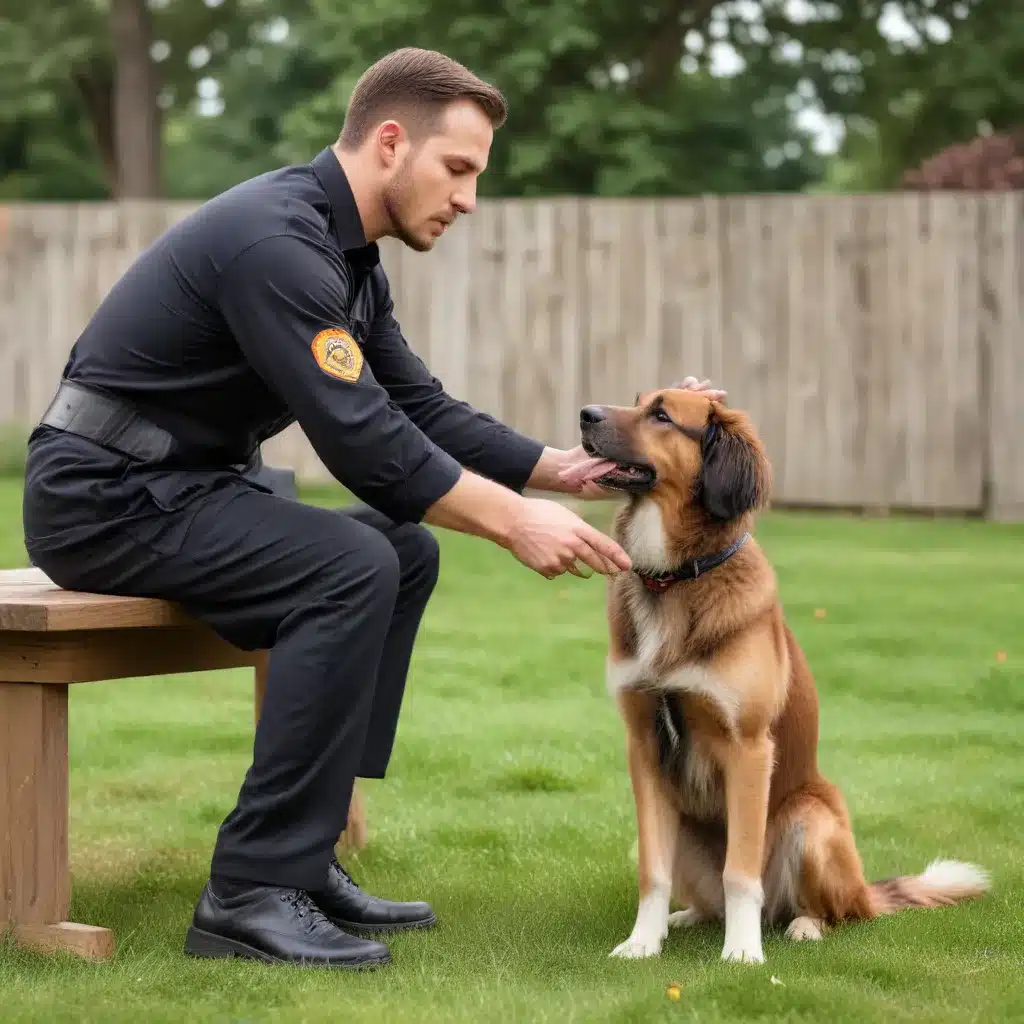
Mastering the Art of Desensitization and Counter-Conditioning
As an experienced avian caretaker and expert in all things birds, I’m excited to share my knowledge on the transformative power of desensitization and counter-conditioning. These remarkable behavioral modification techniques can work wonders for our feathered companions, helping them overcome fears, build confidence, and develop healthy, positive associations.
Principles of Behavioral Modification
At the heart of successful avian behavior training lie two core approaches: desensitization and counter-conditioning. Understanding the principles behind these methods is key to unlocking their full potential.
Desensitization is the process of gradually exposing a bird to a feared or anxiety-provoking stimulus, but at a level that doesn’t trigger an intense emotional response. Over multiple sessions, the intensity of the exposure is slowly increased as the bird remains calm and relaxed. This allows them to learn that the once-dreaded stimulus is actually harmless, slowly chipping away at their fear.
Complementing desensitization is the powerful technique of counter-conditioning. This involves pairing the fearful stimulus with something the bird finds highly rewarding, such as a favorite treat or engaging playtime. By consistently creating these positive associations, the bird’s emotional response shifts from one of anxiety to one of anticipation and joy.
The common thread running through both of these approaches is the importance of reinforcement. Whether it’s a delicious morsel, an enthusiastic praise, or an enriching activity, positive reinforcement is the key to shaping desirable behaviors and cementing new emotional responses. Rewards motivate birds to engage in the training process and reinforce the lessons they’re learning.
Avian-Specific Applications
Now, let’s dive into how these principles can be applied to our feathered friends. From phobia reduction to behavior modification, the possibilities are endless.
Phobia and Fear Reduction in Birds: Many birds struggle with specific phobias, such as a fear of loud noises, strange people, or unfamiliar environments. By employing desensitization and counter-conditioning, we can help our avian companions overcome these debilitating fears.
For example, a cockatiel with a fear of strangers might initially be exposed to a person at a distance, rewarded for remaining calm. Over time, the person would gradually move closer, always paired with high-value treats and affection. This teaches the bird that new people aren’t a threat, but a source of wonderful things.
Encouraging Positive Associations in Birds: Counter-conditioning shines when it comes to cultivating joyful experiences for our feathered friends. Perhaps your parrot is wary of having their wings clipped – a necessary but often unpleasant task. By associating the wing-clipping process with delectable morsels and praise, you can transform their perception from one of dread to one of excited anticipation.
Modifying Undesirable Behaviors in Birds: Desensitization and counter-conditioning aren’t just for fears and phobias – they can also be powerful tools for addressing problematic behaviors. Let’s say your cockatiel has developed a habit of aggressive biting during certain interactions. By gradually exposing them to the situations that trigger the biting, while reinforcing calm, polite behavior, you can reshape their response.
Ethical Considerations
As we explore these behavioral modification techniques, it’s crucial to keep the welfare and well-being of our avian companions at the forefront. Ethical training practices are essential for building trust and fostering a lifelong bond.
Animal Welfare Concerns: Desensitization and counter-conditioning must always be implemented with the bird’s best interests in mind. Rushing the process, causing undue stress, or using aversive methods can do more harm than good. Patience, empathy, and a deep understanding of avian behavior are vital.
Trainer-Bird Relationship Dynamics: The bond between a bird and their caretaker is truly special. By approaching training with kindness, positivity, and respect, we can strengthen this connection and create an environment where the bird feels safe, secure, and motivated to learn.
Long-Term Behavioral Change: Sustainable behavioral modification is about more than just quick fixes. It’s about instilling lasting confidence, resilience, and adaptability in our birds. With a comprehensive, thoughtful approach, we can help our feathered friends thrive, not just in the moment, but for the long haul.
Practical Implementation
Ready to put these principles into action? Let’s explore the step-by-step process of implementing desensitization and counter-conditioning with your avian companions.
Step-by-Step Desensitization Protocols: Begin by identifying the specific stimulus that triggers your bird’s fear or anxiety. This could be anything from the sound of a vacuum cleaner to the sight of a new person. Start by exposing your bird to this trigger at the lowest possible intensity, rewarding them with treats and praise for remaining calm.
Gradually increase the intensity over multiple sessions, always keeping your bird’s comfort and emotional state in mind. If they begin to show signs of distress, immediately reduce the exposure and reinforce their calm behavior. Celebrate even the smallest successes – each step forward is a victory.
Tailoring Techniques to Individual Birds: Remember, every bird is unique, with their own quirks, preferences, and sensitivities. What works for one cockatiel may not be as effective for another. Observe your feathered friend closely, take note of their individual triggers and motivations, and adapt your training approach accordingly.
Maintaining Consistency and Progress: Behavioral modification is a journey, not a destination. Consistent, patient practice is key to seeing lasting results. Stick to a regular training routine, be diligent in your reinforcement, and be prepared for the occasional setback. With time and dedication, you’ll witness your bird’s transformation from a fearful, anxious creature to a confident, well-adjusted companion.
At Mika Birds Farm, we’ve seen firsthand the remarkable changes that desensitization and counter-conditioning can bring about in our avian residents. By empowering our birds to overcome their fears and develop positive associations, we’ve been able to facilitate successful adoptions and foster harmonious relationships between birds and their new families.
Remember, every bird deserves to live a life free from debilitating anxiety and phobias. With the right tools and a compassionate approach, we can help our feathered friends spread their wings and soar with confidence. So, let’s get to work – your bird’s transformation awaits!


